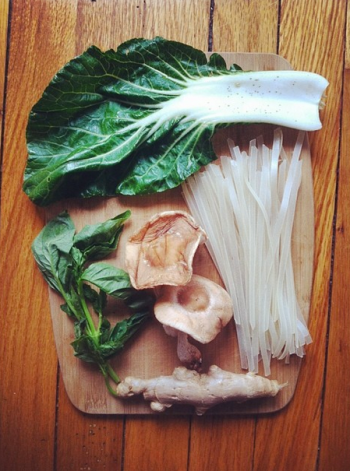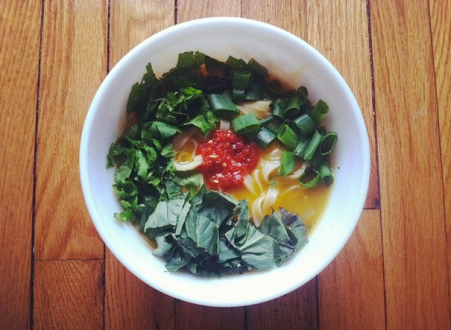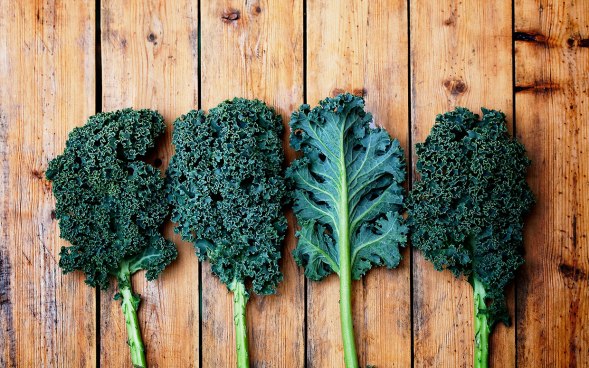Note: This is the second installment of a three-part series on alternative uses for common kitchen staples
As a college student, there have been an embarrassing number of times I have lost track of my life, whether it has been running out of (edible) food or misplacing my phone or keys. While these may constitute as some pretty trying times for a lot of young adults, they still don’t match up to what I believe is the worst thing to lose track of: empty bathroom essentials.
Whether it be shampoo, conditioner or body wash, discovering you’re out of something when you hop into the shower because you forgot you had to open the bottle last time and scrape around the sides to get the very last smidgen is easily one of the most unnerving dilemmas I can think of. In fact, it makes my skin crawl.

Running out of shampoo, conditioner or face wash might be a pain, but there are several ways to remedy the dilemma — and, chances are, they’re all sitting in your kitchen
Thankfully, there are several natural alternatives, most of which are lying around your kitchen in their purest forms right now. And, believe it or not, ditching your store-bought shampoos and conditioners and switching to homemade remedies may actually save you a couple hundred — if not thousand — dollars on ineffective products and doctor visits.
“As a woman who struggled with acne for more than a decade, I understand how frustrating it can be to spend thousands of dollars on doctor visits and special chemical-laden creams that don’t work,” Richele Henry wrote on her blog, MindBodyGreen. “I started searching for alternatives and found that some of the best skin treatments are pure, whole-food based facials you can give yourself at home in minutes.”
And she is absolutely right. I have taken to the kitchen when I found out I was out of face wash, shampoo, conditioner and toothpaste, and I have found my hair to be much softer, and my skin and teeth to be much brighter, after using ingredients I would normally never think twice to apply to my body.
So, what exactly can you make when you run out of your bathroom essentials? There are plenty of things you can find if you scour the Internet, but the following are my Top 5 favorite creams and scrubs.

Homemade lemon sugar scrub is perfect for exfoliating your face, hands or body
1. Lemon Sugar Scrub: This was one of the first scrubs I made on a whim, and now I make jars of it as gifts for family, friends and coworkers because it works so well. RECIPE: To make two Mason jars’ worth, use 5 cups of granulated sugar, 2 cups of olive oil and 7-8 tbsp. of lemon juice. Mix it all together in a bowl and distribute into the jars. This recipe is perfect for your face, hands or body!
2. Avocado, Honey and Coconut Oil Hair Mask: I make this hair mask at least once or twice a week, because it brings out a magnificent shine and smoothness that I’ve never gotten from only using store-bought shampoo, conditioner or deep-conditioning cream. RECIPE: In a plastic bag, mix together ½ of a ripe avocado, 2 tbsp. of coconut oil and 1 tbsp. of honey. Then, add to your hair and let sit with a plastic bag over your scalp for at least 30 minutes to an hour. Once you’re ready to rinse it out, add shampoo to your hair before you get it wet, then rinse. Follow with an all-natural conditioner if you want. It’s one of my hair’s favorite recipes!

Mix a few tablespoons of coconut oil and baking soda with your choice of essential oil and Stevia for a wonderful alternative to chemical-laden Crest and Colgate toothpastes
3. Homemade Coconut Oil Toothpaste: I just began experimenting with coconut oil a few months ago when my friends told me about all its uses outside of cooking. This was one of the concoctions I made down the line because in my house, essential oils aren’t usually as readily available as avocado, lemon or sugar. Regardless, this is a recipe that I believe is a must try for all looking to ditch their Crest or Colgate. RECIPE: Mix 6 tbsp. coconut oil, 6 tbsp. baking soda, 25 drops of essential oil of your liking and 1 tsp. of Stevia into a bowl until it is light and creamy, then pour a Mason jar or other tight-sealed container for later use.
4. Yogurt, Lemon Juice and Egg Hair Mask: I just recently began making this hair mask when I decided to take a break from dairy and needed a reason to use the rest of the yogurt in my refrigerator. While I’m pretty attached to eggs (see the first installment of this series), I decided to sacrifice one for the sake of my hair — and boy, was it a good idea. This mask makes your hair silky smooth, while the protein from the egg helps strengthen it. It’s fantastic! RECIPE: In a medium-sized bowl, combine ½ cup yogurt, 1 tbsp. lemon juice and 1 egg. Apply the mixture to your scalp after oiling and cleansing. Leave the mask on for about 20 minutes, and then rinse thoroughly with warm water.
5. Mint and Green Tea Homemade Lotion: And last but not least, the most intricate recipe of them all. I just learned how to make this lotion a couple months ago, and although I’m almost out of it, there’s no doubt in my mind I’ll make it again. The basic recipe allows for free reign over what you want it to smell like, so I decided to choose one of the recommended pairings: mint and green tea. (Because what sounds more refreshing than that?) There’s many more, so I encourage everyone to try it! RECIPE: Combine ½ cup olive oil, ¼ cup coconut oil, ¼ cup beeswax (and an optional teaspoon of Vitamin E oil, 2 tbsp. Shea or cocoa butter, and essential oils, such as mint and green tea) into a pint-sized Mason jar. Then, fill a medium saucepan with a couple inches of water and place over medium heat. Place the lid loosely on the jar, then set the jar in the water and wait until the ingredients are melted. Once they’re melted, pour the lotion into the jar you’ll store it in. Use it all within 6 months, and then make some more!











